
There are many fish in Japan, and their fishing methods are diverse.
For example, there are two major methods for aiming at the lure for red sea bream that represent Japan, the lure, and the method for aiming at using bait, but there are more than four types of fishing with the lure and over ten types of fishing with the bait.
Therefore, when doing various fishing, it is also necessary to have specialized equipment, which is very expensive.
If you come to Japan and try fishing, it will be easier if you decide in advance to squeeze the target fish and to decide type of fishing, and you can easily go where you want to go and gather the tools you want to go.
I introduce the outline (one example) by dividing the typical Japanese fishing method into fishing from the shore and fishing from the boat.
Details will be introduced in a book to be published later.
〇Fishing from the shore
● Embankment fishing
I think this is the easiest fishing experience for travelers of foreigners.
Fishing tackle shops also have introductory tools, which are completed, and you can buy them and go fishing if you buy bait.
In addition, in Japan, sea fishing park may be maintained depending on the area, and it is not only the rental of a set of tools for fishing but also restaurants, rest facilities, restrooms, etc. for eating. This is especially recommended for family fishing experiences.
A variety of fish can be caught from the embankment, and various fish such as horse mackerel, mackerel, sardine, Japanese whiting,
seabass, yellowtail and marble rockfish can be caught.
In addition, many people aim at octopus and squid in recent years,
and many people aim at squid by lure fishing using a Japanese-made lure called egi .
The method is called Egging.
There are also established lure methods for targeting horse mackerel and Japanese rockfish such as ajing and mebaring, which can be enjoyed casually, but require a specialized tool and their method are therefore somewhat difficult.
The recommended way of fishing is sabiki fishing using Japanese artificial bait.
This is using a piece of plastic wrapped around a hook, using a mechanism of about six hooks vertically, using a small plastic basket that combines a weight and a basket for feeding bait at the bottom.
This method can catch horse mackerel, mackerel, sardines etc.
It is a very enjoyable fishing because it is very easy and a lot can be done by the method of fishing etc.
In particular, this fishing does not need to be attached with such as isome or krill.
Instead, place the bait in the bottom of the basket, or just sprinkle the ground bait with the ladle.
After that, when you put the device in the ground bait, just wait for the fish that misunderstands the artificial bait hook as bait in the ground bait.
It is very relaxing fishing.
The disadvantage of this fishing is
that it’s smell of this bait smells bad, and spilling it on the clothes can be very difficult to wash clothes.
In addition, there is also a fishing method called choi-nage, which uses a mechanism such as a balance mechanism or mechanism of two-three vertically and use isome and krill as bait
and drop it at the foot or throw it a little further and then fish it.
You can fish more easily without preparing the ground bait like Sabiki fishing.
The main target fish are fish that are near the bottom such as marble rockfish and Japanese whiting.
There are also people who aim for migratory fish by means of shore jigging by throwing a lure called metal jig from the embankment.
This fishing method requires only a kite, a reel, and a lure called a metal jig , and this method needed to retrieve action and fall action to catch fishes.
The drawback of this fishing method is that when there are no migratory fish,
you can only catch as much as the marble rockfish near the bottom, and if the lure gets caught on the rock, the loss will be very large.
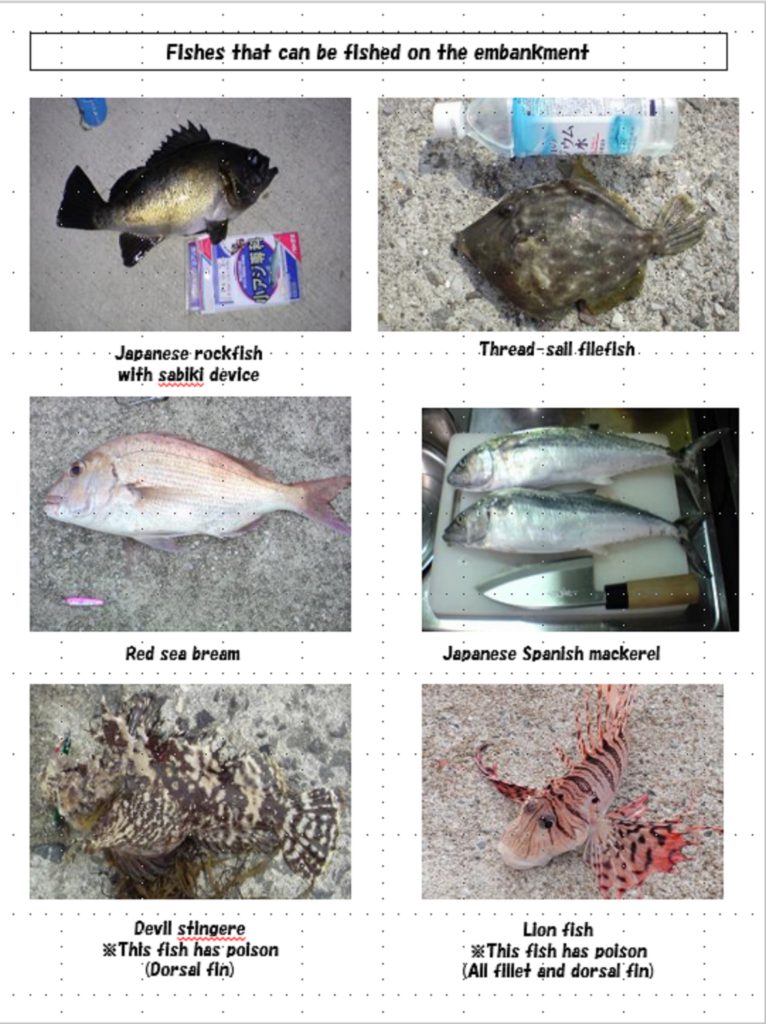
●Surf Casting
Surf Casting is the main field on a sandy beach, and it is a method to catch mainly the fish called shiro-gisu(Japanese whiting).
Especially in this fishing, long throw is the key, and people who fly can fly more than 200 m, so if you fly far you can widely explore the place where the fish is and you can catch many fish.
The standard of the big fish for those who aim at this Japanese whiting is 30 centimeter, and there are many people who go to the fishing spot aiming at a large Japanese whiting which is said to be known as tapping the elbow.
In addition, we can aim at not only Japanese whiting but also large-sized red sea bream, seabass, flatfish etc. in surf casting
and these are mainly performed from sandy beach, rocky shore,
embankment etc. at night.
At night, the probability of being able to catch a big fish may be greatly increased.
Therefore it is necessary to go with some friends to prevent danger and you should not make noises to prevent problems.
Because of nearby residents sleeping
Also, in recent years, there are many anglers who aim for fish such as olive flounder and flathead by throwing lures from the sandy beach.
In particular, these fish are often able to catch fish at the seashore.
Because those fish are waiting for Japanese whiting caught by surf casting.
Flatfish is usually fished at the seashore.
But anglers of surf casting can’t usually catch the fish.
One of the reasons is that many anglers use a thin gear so they are often cut off.
In addition, reels of this fishing are special.
Because of non drag.
Therefore they can not cope with sudden flat fish hits.
The situations for fishing with a lure are that small bait fish that will be docked near the shore.
Depending on the situation, the yellowtail may be following the small fish.
There are many situations in which the yellowtail hits instead of olive flounder etc.
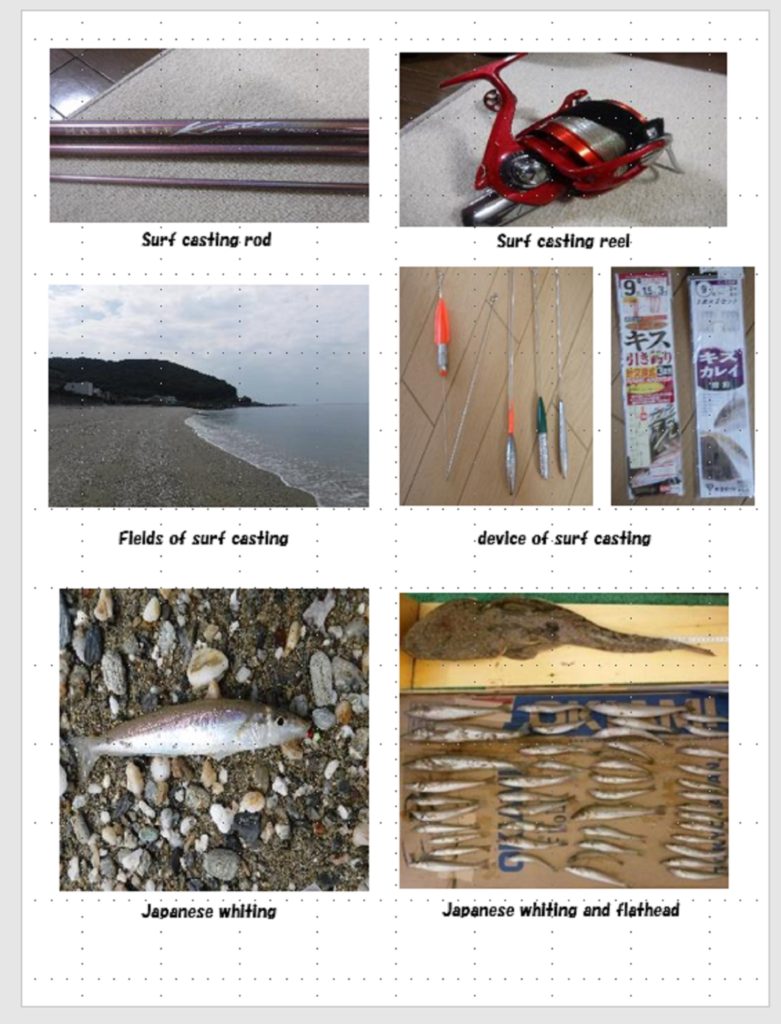
●Rocky shore fishing
It is one of the most popular fishing method in Japan.
The characteristic of this fishing is to aim mainly at Largescale Blackfish and sea bream with a very delicate thin device.
In this fishing, it is interesting to synchronize the devic with the tide to eat a large fish that is nervous and to catch the big fish with a thin tackle using the skill of the angler. .
This fishing is very difficult, but it becomes addicting when you see the fish bite and the floats go down.
Besides this, there is a fishing called kago fishing, and this fishing is to put a cage for baited krill, and attach floating ,throw away, synchronize groundbait with the device to catch fish.
You can catch various fish such as largescale blackfish, red sea bream,sea bream,chicken grunt and kingfish.
In recent years, fishing have mainly been performed using PE lines, but the traditional fishing such as fukase fishing and kago fishing is the same as decades of fishing using nylon lines, and it becomes traditional Japanese fishing.
There is also a special category of rocky shore fishing , which aims to target fish called striped beakfish or to aim for the longtooth grouper of the king of rock fish.
Both of them are mainly fishing with wire mechanism, which is very exciting, but those fishes are extremely large and it is also very dangerous fishing.
In particular, there are many enthusiasts in this fishing, and there are special magazines on striped beakfish fishing.
This striped beakfish is a particularly delicious fish among Japanese fish.
It is good to fish and eat, and it is recommended to eat it if you find it in a Japanese restaurant.
The fish called longtooth grouper to fish is used frozen mackerel and live fish as bait fish.
But there are many fish that their size exceed one meter.
Therefore, when anglers usually fish this ,three anglers cooperate with catching this fish.
One person enters under the rod and lift up,the other one pulls the thread, and the other one rolls the handle of the reel, it’s not like game fishing, look like fishing anymore.
If you don’t do this because you’re fishing on a bad-footed field, the fish will pull you into the sea.
This long tooth grouper is the most delicious fish in Japan, and it can cost up to 1000000 yen($10,000)per 1 fish or more depending on the species.
Generally, it is around 15,000 yen($ 150) as a market price per 1 kilogram.
It is difficult to find this fish, but if you find it at a restaurant, but it is recommended to try it.
Another way to fish from rocky shore is lure fishing.
The main target fishes are blue fish such as black fin seabass,seabass,yellowtail and kingfish.
Black fin seabass is said to be an illusionary fish, and is said to be able to fish only when the sea is in stormy weather , but it is not.
It is so important that I will put it into force to explain, but it is a mistake.
Some of the anglers say that you can only fish in stormy weather.
Certainly, this fish is vigilant when the water surface is calm and this fish does not attack the lure.
But we can not move the lure properly in stormy weather
because , swelling is strong.
Also, naturally the waves are high, and if you go to the water’s edge, you will be exposed to the high waves.
In fact, every year many people go fishing and die at the time of such stormy weather.
If you want to catch this fish, you should aim at the night embankment, or it is most likely to aim after crossing the rocky shore.
It is safe and certain.
(The reason why crossing rocky shore is that the captain who handed over the boat is watching while do fishing.)
Using minnows on the surface are mainly method of aiming for black fin seabass.
But it depend on the situation.
In case , they use vibrations and metal jigs, but using minnow has the best results.
If you do this fishing, you will need to have a strong tackle compared to the usual seabass equipment, which is usually a large-sized red sea breamlchicken grunt , yellowtail and kingfish in the guests.
Another lure fishing from the rocky shore is shore jigging.
Especially in recent years, this fishing is called rocky shore jigging and has become very popular fishing.
Use a metal jig and throw away the ball and move the lure to aim for yellowtail and kingfish.
But a large-sized fish hit is often , and since it is fishing around a rocky shore, the thread runs down the fish , those fishes often break line by touching rocks.
So there are a lot of anglers who go to this fishing and go to this fishing because there is a power fight that is forced to stop.
Also, there is a top game as a way to aim for yellowtail and kingfish .
This fishing is fishing called plugging with a large pencil bait.
In this fishing, such a fish is large compared to jigging,
so the tool needs a strong one.
The reason for this is that large fish have a strong swimming ability and are always conscious of the surface, and they use a large lure as an attraction for large fish and invite them.
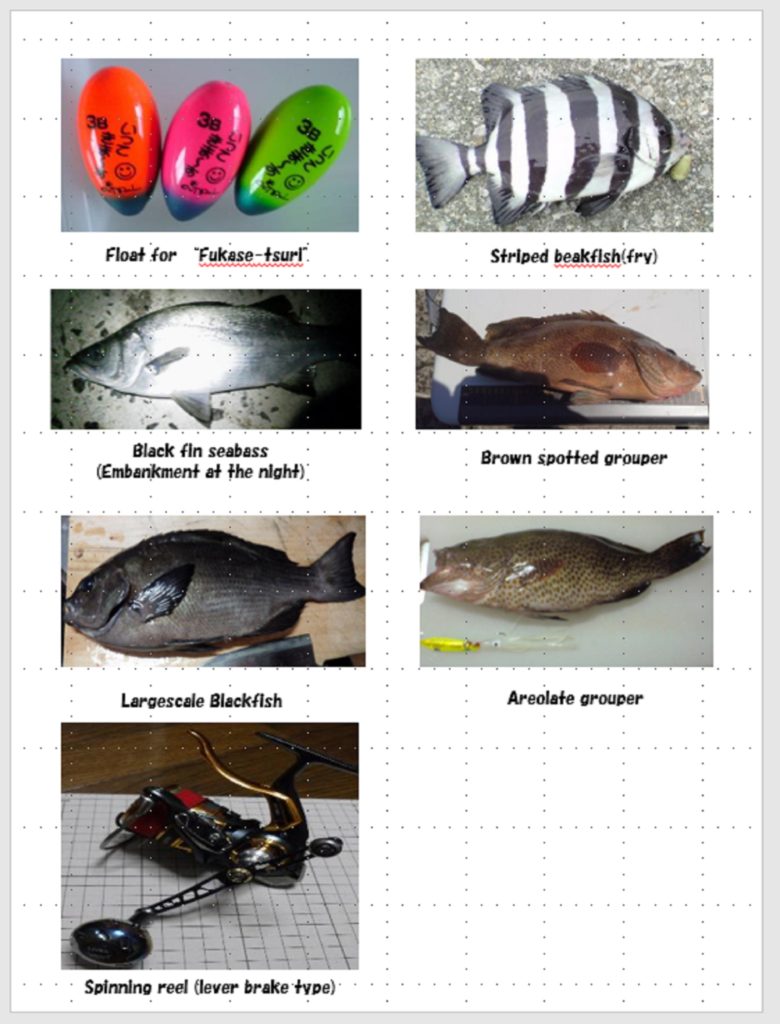
Fishing from the boat
Fishing from boat can be divided into two major types: fishing with bait and fishing with a lure.
●About fishing with bait(one example)
The target fish range from relatively small fish such as horse mackerel and mackerel to large fish such as longtooth grouper, tuna and kingfish.
The main fishing methods are the following.
◎Live bait fishing
This fishing use small fish such as horse mackerel, mackerel, sardine, squid as bait and is targeting large fish such as yellowtail, kingfish, red sea bream, longtooth grouper and seven band grouper.
The best thing about this fishing is that when a large fish comes in, the small fish of bait starts to go wild, and if you wait as it is, the tip of the fish will be drawn.
In particular, in fishing aiming for large rock fish such as longtooth grouper and seven band groupers, sometimes it is too big to think that feel the rock to big fish for a moment.
One of the derived ways of fishing is fishing called “otoshikomi-tsuri”.
The fishing method is to fish small fish with the sabiki device and place it near the bottom of the sea to aim for large fish.
The advantage of this fishing is that it does not require a series of movements such as live bait fishing, it can develop fishing with small fish that are the bait that the large fish eat there.
Large fish hit with high probability if bait fish is attached.
In this way of fishing, a great number of fish can be caught.
When I fished most, the 100 liter cooler was full, and there were many other releases.
At that time, I think I fished nearly 200 kilograms.
The field where you can enjoy this fishing is mainly in Kyushu, especially in Fukuoka Prefecture and Nagasaki Prefecture, Oita Prefecture, this fishing method is major.
Live bait fishing is especially famous in Nagasaki prefecture.
Longtooth grouper fishing is started from June to August every year off the coast of Hirado, and anglers come from all over Japan in search of large fishes such as over 30 kilograms.
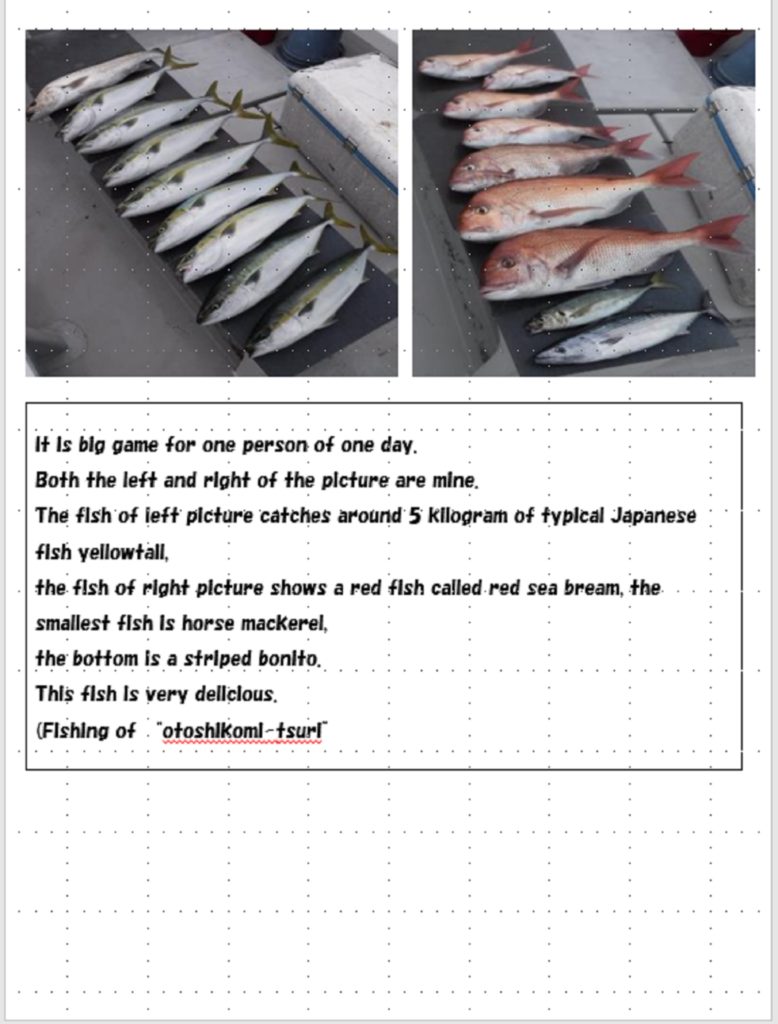
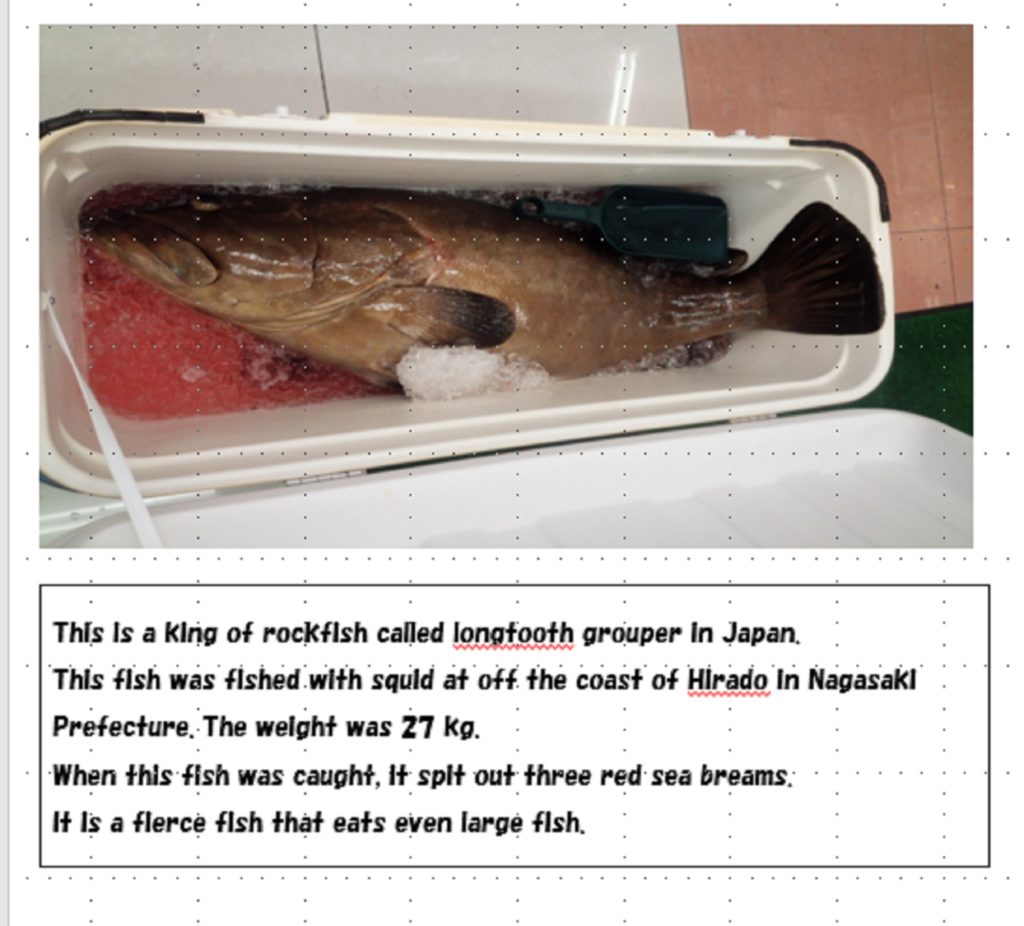
◎Fishing with ground bait and krill (komase-tsuri)
The target fish for this fishing is from horse mackerel, mackerel, and red sea bream to large fish such as yellowfin tuna.
The characteristic of this fishing is using krill, put krill on “komase-kago” (bishi) on the balance mechanism, shake the rod up and down in the sea.
When it gets on a certain shelf, put out the krill in the basket and
tune hook(attached krill) with ground bait.
This fishing will definitely be the best if you can seize the seat of stern.
The reason is that since the ground bait that the person at the bow side naturally flows toward the bottom of the tide.
A lot of ground bait gathers around the person at the stern, therefore the probability of being able to catch it increases.
It is absolutely impossible to overturn this, no matter how good skill have.
However, you can catch delicious fish such as chicken grunt, but you can not really catch them if you become a bad fishing spot.
Therefore, it is better not to be recommended even if this fishing is recommended.
Also, because this fishing uses the krill, it is a horrible fish.
Care should be taken as spilling the krill juice and sticking to the clothes, as the smell does not fall off easily.

◎ Small fishing with bait such as isome and krill etc.
This is mainly aimed at Japanese whiting, or flounder,thread-sail filefish and it is highly recommended for beginners,
but these fishing are deep .
Japanese whiting can fish well in Tokyo Bay, but flatfish can catch more and more large as you go to the north.
50 cm flatfish can catch well in Hokkaido.
Thread-sail filefish is large as you go to the west, and particularly large size filefish inhabit in Ehime Prefecture in Shikoku region and Oita Prefecture in Kyushu.
It takes a lot of time to cook, but it is easy to cook when you get used to it relatively.
And it may be more delicious than Japanese high-grade pufferfish.
It is an excellent target that combines the fun of fishing with the taste.
It is the origin of the name of Kawahagi to peel the rough skin of the surface before you eat.
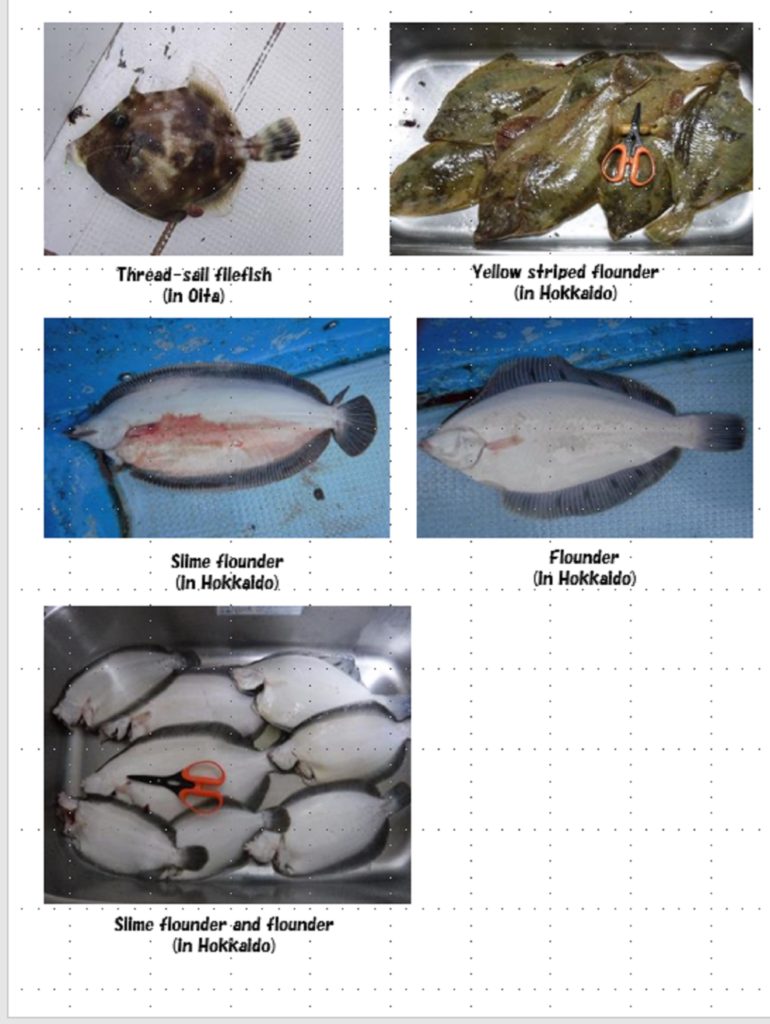
◎ Deep sea fishing
This is fishing that is highly specialized and limited in region.
It is not clearly distinguished the deep sea of about 300meters deep from the deep sea more than.
Especially in the deep sea up to 300 m, scorpionfish is the main target.
In addition, in fishing 300m or more deep, it is mainly targeted at very delicious fish such as kichiji rockfish , splendid alfonsino and rose fish.
Tools for aiming at splendid alfonsino and rose fish can cost several hundred thousand yen if they are properly aligned, and there are only a few anglers who enjoy this fishing in Japan.
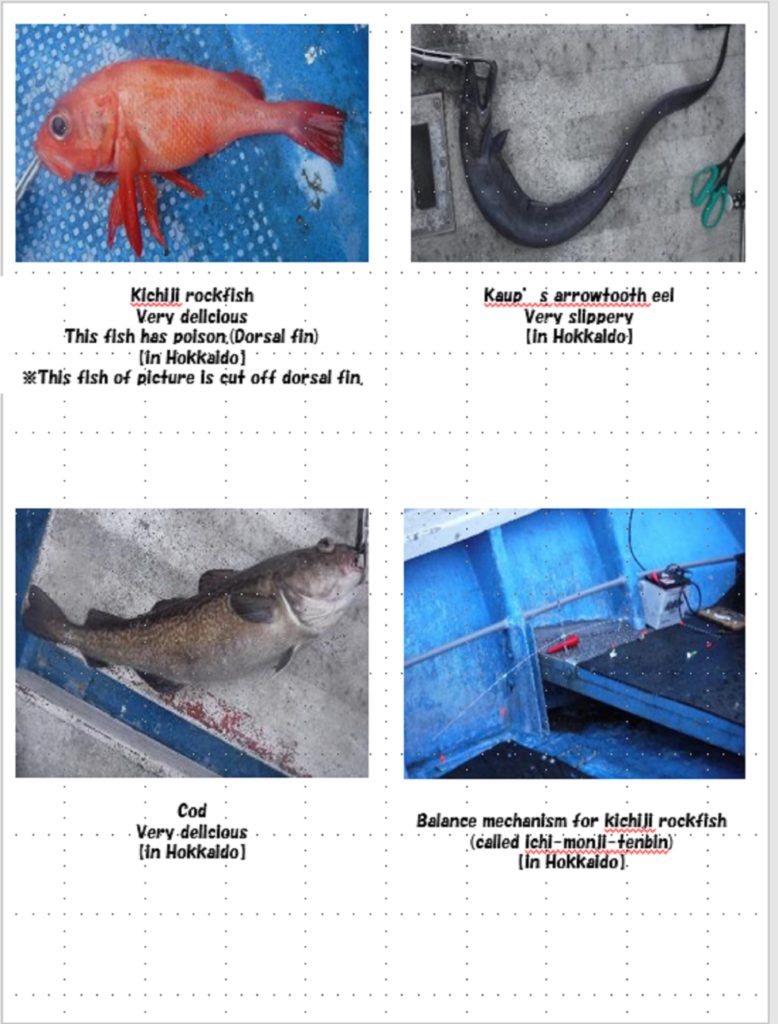
● About
fishing with
lure
There
are three major types of fishing with
lures.
◎ Offshore jigging
Offshore jigging can be divided into two major types: light jigging using a light jig of 120 gram or less and jigging with a jig weight 150 gram or more.
The former light jigging often uses a PE line #1(1 gou) or less, and sometimes uses a very light jig of around 60 gram depending on the situation, and this jigging is generally called super light jigging or micro jigging etc.
But even though there is a difference in calling, it is using lighter tackle and enjoys interacting with fish.
It should be noted that it is not necessary to be smaller, and it is a premise that even if a large fish such as yellowtail is caught, it can be fished without causing trouble to people around.
Recently, in Japan, the method of fishing called slow-jigging has become popular, but in this way of fishing, it is necessary to arrange the tools on the premise that beginners to intermediates who do not know the basics of jigging do not bother the people around them.
So I just want to be careful about the selection of tools.
For fishing with a jig of around 150 gram and a jig weight more than that, the PE line to be used is #3(3 gou) or more as a standard, and it changes depending on the fish you want to catch and the depth.
In particular, with the evolution of the PE line in recent years, 70 kg of fish may also be caught if the thickness is about #3(3 gou) or more.
When aiming for fish that live around the rocks, such as kingfish, if it is extremely thin, line breaks often occur, so it is necessary to use equipment that matches the target fish.
If you aim for the yellowtail mainly, it is safe if there is #3(3 gou) unless you can aim more than 10 kilogram.
Also, in general, if you are considering jigging in the deep sea, you can thin the thread as much as possible within the range of #1.5(1.5 gou) to #2.5(2.5 gou)
There are many people securing the amount,.
But deep-sea hand-rolled fishing often takes 15 minutes to wind up and it is quite tight, so it is safe to do light jigging if you want to enjoy it casually.
Anyway, Jigging is a fishing that enjoys direct interaction with fish.
In particular , pulling yellowtail is a very recommended fishing, as it is often remembered by people who are fishing for the first time.
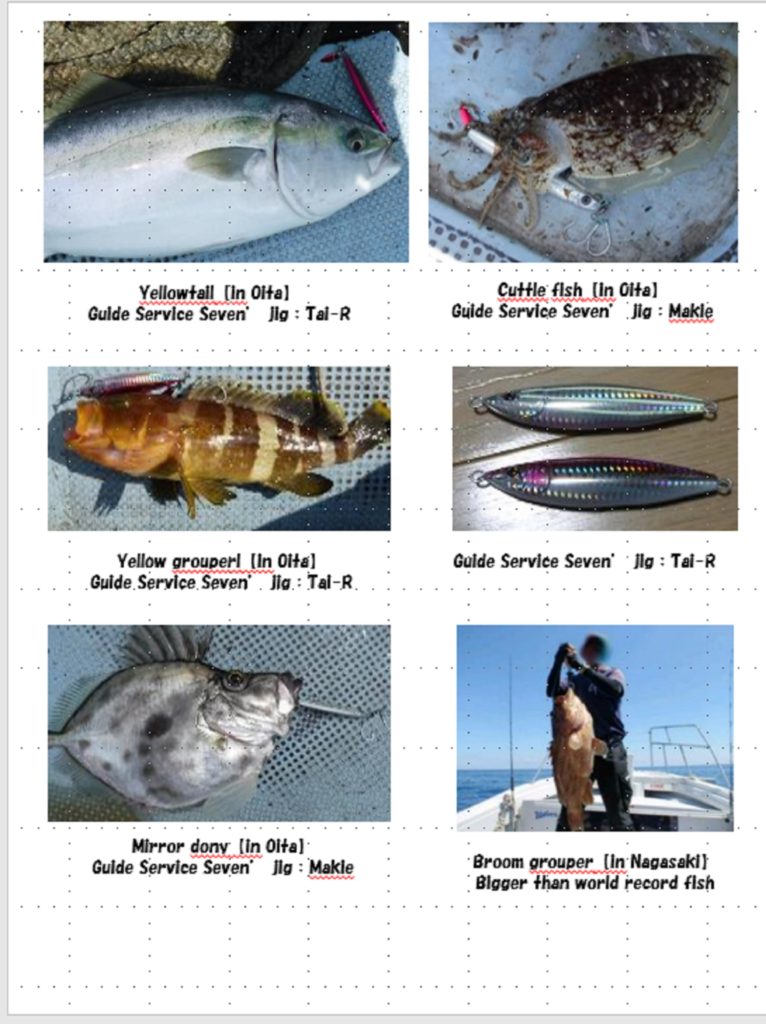
◎About “Tai-rubber” and “Inchiku”
The tai-rubber and inchiku are Japanese traditional lures that have been used for offshore fishing in recent years, with some changes in shape.
In terms of the use of tai-rubber and inchiku, I briefly explain how to use them when you want to aim for a large fish, you should use inchiku.
And when you want to fish small fish or various fishes, you should use tai-rubber.
As for how to fish, it is just a series of fishing operations that once the lure gets on the seabed, it starts winding at a constant speed.
Therefore, it is enjoyed by a wide range of people from beginner to advanced.
Especially, the recommended products of tai-rubber and inchiku are Guide Service Seven ‘s “Seven Slide” and “kaishi”.
This manufacturer have developed the concept of the flexible type that forms the basis of the recent tai-rubber.
This manufacturer has track record of red sea bream fishing in Japan, and I have also tested the products of this manufacturer, but I have fished more than 3,000 fishes a year.
They are the greatest lures that can catch red sea bream etc.
I put a link at the end of the volume. In the next issue, we are planning to introduce feature and method of this tai-rubber and inchiku.
So we will introduce more detailed techniques and tools.
Tai-rubber is a popular fishing in Japan, but it is simple fishing, but it is really deep.
Although the tai-rubber is a lure that specifically aims for the red sea bream, when winding this tai-rubber, the aggressive chasing will come along and hit the tip, but it should never deal with it immediately.
The point of this fishing continues to wind at a constant speed even if it is hit, and it is safe to put a match when it is greatly drawn.
In the case of an inchiku, it is not necessary to think about the timing to match in particular because it will be drawn at once if there is a hit.
The reason for this is that in the case of the tai-rubber, the two hooks are set at the same height, while in the case of the inchiku, the two are set at the same height.
The fine size and size of the hook is larger and thicker than that of the tai-rubber since the inchiku assumes a large fish.
It is very recommended because their method can catch various kinds of fish and also delicious fish a lot.

【Reference】
What is the difference between fixed and floating?
There are fixed and flexible types in the tai-rubber and inchiku.
In recent years, the fixed type is not used at all, and most people use the flexible type.
The biggest difference between the fixed type and the flexible type is that the weight is fixed to the hook even if the fish is caught compared to the fixed type, so the head sinker of the heavy tai-rubber.
When the fish shakes its neck , the sinker is shaken from side to side according to leverage, and as a result, the hole of the hook hanging on the mouth of the fish becomes large, and it will come off due to mouth breakage.
Because there was only fixed type before flexible type came out, even if it hits , it is often come off on the way, and catch rate was quite low.
At that time, the Guide Service Seven of the fishing gear manufacturer in Kitakyushu released the flexible type “Seven Slide” and since then it has been possible that the major manufacturers will imitate that idea.
We have been fishing for over about 30 years, but as far as I know, it is a manufacturer that has the most successful fishing in Japan.
All products of this manufacturer are based on the results, and there are no products that can not be caught.


◎ About the casting game with the pencil bait (Top water game)
This fishing mainly applies to seabass , dorado , bonito and large ones such as tuna and kingfish.
In the case of sea bass aiming, it is common to use minnows of about 12 cm at maximum, but in the case of aiming at yellowtail, kingfish and tuna, a pencil bait such as a large pencil bait with 20 cm or more is often used.
Tools should be also suitable.
The PE line to use is also thick and about #4(4 gou) or more are common.
It is relatively thin when aiming at sea bass, yellowtail, dorado, bonito etc., but it will be quite thick in the case of kingfish and tuna.
In addition, since these casting games can not be thrown if the number of people is carried on the boat.
Therefore the number of people may be limited, and the boarding fee will be considerably high.
If you really want to do this fishing, you should challenge to dorado and bonito etc.
It is recommended that you firstly try to get accustomed to it after getting used to it.
The fish you can catch in this game are very large, and the kingfisher is often caught more than 20 kg, and the tuna is also caught more than 200 kg.
Kingfish is the main fishing spot in Nagasaki Prefecture, and bluefin tuna is the main fishing spot in Aomori Prefecture.







